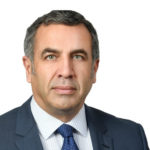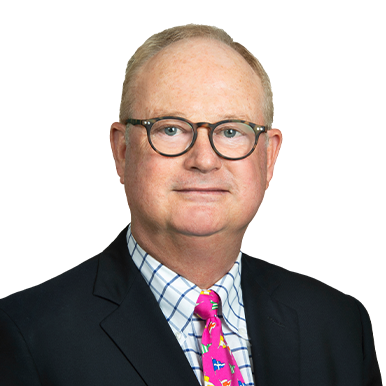Discipline Now Key as Pressures on Reinsurers Mount
The reinsurance market is in a strong position after two years of profits and covering its cost of capital. But it now must retain discipline and manage the cycle correctly as pressure mounts to put any excess capital to use – and new capital enters the market in a variety of ways.
That was the overall sentiment of a round table of the Bermuda:Re+ILS Monte Carlo roundtable, sponsored by Aspen Insurance Group. The session, called ‘Applying discipline and innovation in a softening market’ was moderated by Wyn Jenkins, managing editor of Bermuda:Re+ILS.

Christian Dunleavy, group president and CEO, Aspen Bermuda, said reinsurers are in a much better place after two years of profits following the market’s correction. But the focus must now be on cycle management. “The market is in a much better place; I would say it is softening, but not soft. But we need a real focus on risk and rates. One thing that is clear is that risks are increasing.”
He added that one exception to this trend is US casualty where there is potential divergence on rates adequacy.
Nuance on rates
David Govrin, group president and CEO of Global Reinsurance, SiriusPoint, added that the market has a tendency to focus on property-cat only when discussing rates, but it is important to acknowledge there is great nuance in the market between the performance of different lines of business. But he said discipline was now needed.
“We need to find a way of not having these wild swings in pricing,” he said. “We have only had a couple of years of exceeding the cost of capital. That is not a long-term strategy. We take on a lot of risk as an industry; we need to have a fair price for that.”
Mark Twite, CEO, AXA XL Re Bermuda, said the industry should be seeking a balance. He agreed with Govrin that the industry has only enjoyed a couple of profitable years – after a much longer period of poor returns. “It is a question of creating a balanced portfolio that also serves clients’ needs,” he said.
“It will be interesting to see, in coming renewals, how reinsurers fit into the risk ecosystem. We all have to pay claims but where do we fit in that structure. Insurers cannot survive without reinsurers, but there has to be the right balance as to where we operate in that structure.”
Kathleen Faries, CEO, Artex Capital Solutions, an insurance-linked securities (ILS) specialist, made the point that it will be interesting to see how much capital enters the industry in the coming months – and where it wants to operate. “Yes, there is a conversation around discipline, but where will capital deploy in the ILS space,” she said.
“It does feel like we are at a point in the cycle whereby too much capital coming in could have an impact on rates. Balance is exactly what we need.”
A ‘moderating’ market
John Huff, CEO, Association of Bermuda Insurers & Reinsurers (ABIR), describes the current market as “moderating” in terms of rates. He acknowledged the industry has enjoyed “rate adequacy” for two years now – something he said has been appreciated not just by investors but also regulators and insurance supervisors.
He described the latter as being keen to see more capital deployed in their jurisdictions because they believe it will lower the cost of insurance and aid local economies. He said that their understanding of the importance of reinsurance was better than ever –something that could only benefit Bermuda reinsurers.
He added that that value of reinsurance was underlined at the start of the year when the California wildfires triggered insurance losses in the region of $25-$30 billion. He noted that Bermuda reinsurers will pay some 30% of those claims. “As one reinsurance CEO said to me, ‘that’s what we are here for’,” Huff said.
But he also expressed concerns over the casualty landscape in the US. He said litigation financing and litigation harvesting, a trend where the public is contacted by lead generators out to create class action lawsuits, are a big problem, and are driving up social inflation costs exponentially. He said this problem would come to a head – it was just a question of when. “Nothing happens in the US without insurance,” he said.
Mahesh Mistry, senior director, head of analytics, AM Best, offered his analysis, partly leaning on themes delivered in a well-attended press conference the rating agency held in Monte Carlo yesterday. He described the reinsurance industry as “in a very good place “and with a good outlook. Its results in 2023 and 2024 were “exceptional”, he said. But he noted that was the first time it had met its cost of capital for some six or seven years.
“But it is not really enough to simply meet the cost of capital; the industry should want to exceed it on a regular basis,” he said. “Despite the January California wildfires, results remain positive this year. Q2 and Q3 were benign in terms of losses. But old habits die hard and market discipline is now key. We see that as critical. There is plenty of capital, but discipline is key.”
Demand means opportunity
On the point around discipline, Govrin stepped in and stressed that there is nuance around that point on every deal. Ultimately, it depends on what a carrier is being paid for the risk they are taking, he said. “Some might see aggregate covers or lower layers being done and assume discipline is slipping. But it depends on what they are getting paid,” he said.
Matthew Britten, partner, Risk Assurance Services leader, PwC Bermuda, acknowledged that there is demand from cedants for lower layers as well as more frequency covers. While this would not extend to earnings protection-type products, he suggested where there is demand that could be an opportunity for some players perhaps looking to get on a programme for the first time. “But the assumption is that discipline will hold,” he said.
Chris Bonard, CEO of Ardonagh Specialty (Bermuda) and group president of Price ForbesRe, argued that the discipline is there at the moment. But he made the point that much of the incoming capital is being out to work in sidecars, which are also increasingly diversified in terms of the risks they will take on. But he agreed on the importance of balance and cycle management in the current market conditions.
Brad Adderley, Bermuda managing partner, Appleby, noted that he, too, had been surprised by how many sidecars have launched already this year – usually new structures tend to be launched post Monte Carlo. “There are also more in the works, and quite a number are focused on casualty business,” he said.
Britten also acknowledged this trend and added that casualty ILS is now a fast-growing field as well. He expressed some caution around this, however. “It will be interesting to see how it pans out – how exit options work, for example.
Stick or twist
The executives also discussed how balance sheet carriers might use surplus capital, which Mistry said had built up after two years of solid profits. Some players may eye merger and acquisition opportunities, the participants agreed. But the consensus was they were more likely to seek underwriting opportunities – or simply keep capital in mitigation of any future crises. “I get the impression, given the uncertainties, they want to hold it,” he said.
Dunleavy agreed. “M&A may come into the frame, but there is plenty of risk in the world. I think most players will be seeking organic growth,” he said. “Two years of covering the cost of capital is a pretty low bar for a long-term successful business. We are not in excess returns territory yet. “The attendees then debated the nuance of discipline in the market. While balance sheet carriers might be able and willing to hold the line, new capital flowing in via ILS structures or sidecars could have a different perspective. “It depends what mandate investors have, “Mistry said. “Are they seeking returns or growth?”
Twite agreed that most carriers would look to deploy capital to leverage underwriting opportunities. “I think it will be a question of risk managing your own portfolio, rather than considering M&A,” he said.
Govrin also made the point that the excess capital could turn out to be relatively precarious if wider economic forces, including the interest rate environment, were to change. “That could have a material impact on things,” he said. “I think carriers will be looking at new products and to innovate with the capital they have.”
Britten agreed that uncertainties in the world make it unlikely they will simply return capital to shareholders. “I heard the phrase, risks are not regressing; they are more complex and interconnected than ever and there is always some new risk that needs to be insured,” he said. But he added that innovation often takes time.
Dunleavy agreed. “Work is initially done behind the scenes. You don’t see any impact on the surface for a long time,” he said. “If you take casualty ILS as an example, it took years to figure it out. Then you might see a rapid execution; a number of deals in succession.”
AI versus people
The executives spent time discussion the potential for AI to change the industry. The consensus was that it is already being used to achieve operational efficiencies but is less useful for creativity and innovation. They also agreed that the insurance industry, as one that understands risk, was cautious on its dangers. That said, it also provides an opportunity to develop products to cover these risks.
The discussion also moved into talent, and how important it is for the industry to attract and retain a new generation of leaders able to understand the shifting risk landscape and innovate in the future. Huff noted that a high number of senior leaders will be leaving the industry in the next five years, creating a talent vacuum but also opportunity. “There is a silver tsunami coming,” he warned.
Overwhelmingly, the panel agreed that the insurance industry, especially in Bermuda, is in a good place when it comes to attracting the best talent – and has overtaken other sectors such as investment banking, for example, as being a preferred career route for young people. “They are attuned to what they want and they see the attraction of this industry. The pipeline is very strong,” Dunleavy said.
Other topics emerged towards the end of the session. Some executives expressed concerns over litigation trends seen in the US coming to Europe. Britten said Europe could be grappling with this challenge in years to come. Mistry also identified this as a future concern for Europe.
Speaking on the ILS space, Faries made the point that as ILS expands into new territories and lines of business, it is also important to acknowledge the complexity of that and educate investors. “It is exciting. It is what we have wanted. But it also makes for more complex deals. Investors will need education,” she said.
Dunleavy also raised a concern about the alignment of interests in some parts of the market, where there has been a rise in structures that use delegated authority. “We need to be careful as an industry: the risk takers need to be the price makers, not the price takers,” he said. “There has been an explosion of follow-capacity and delegated arrangements, but carriers need to stay close to the pricing on those. The alignment of incentives is not always strong enough.”
First Published in Intelligent Insurer, September 2025

















